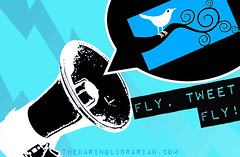- ARPDAUPosted 13 years ago
- What’s an impressive conversion rate? And other stats updatesPosted 13 years ago
- Your quick guide to metricsPosted 13 years ago
Using social networks to build a tribe
Marketing and community-building are mandatory for self-publishing games developers. Reaching out and communicating with your fans is essential to making money with a free-to-play game. This post is the third of three extracts from How to Publish a Game that we’re reproducing here, to show you how to attract customers and build a tribe of followers. For a complete guide to self-publishing and making money from your game, buy the book now.
Social marketing
The golden rule for social marketers is “Go where your customers are.” It’s no longer cost effective to drag them to you – you need to go to them.
Facebook’s growth has been nothing short of astonishing. With over 400 million registered users65, approximately half of whom visit the website every month, it has become more than a marketing and communication tool. It is now a games platform in its own right.
And as Figure 19 shows, it is showing exponential growth. The chart is from 1st December 2009, and within three months, Facebook had added another 50 million users.
Fan pages on Facebook can be very powerful. In the case of Pet Society, nearly 1.6 million people have Liked the page. That means that updates from the page appear in their newsfeeds and their friends will see that they like the game. This social proof is extremely powerful and helps to drive viral take-up of the game.
The purpose of a Facebook Page is to:
- Allow gamers to show how much they like the game
- Have a feedback channel for suggestions and ideas
- Give a mechanism of talking to your customers in their own environment
- Showcase how popular your game is
You should use it to keep players updated with changes, to initiate conversations with your fans and to provide additional ways of interacting with them.
I use a Facebook Page for GAMESbrief, even though I am not targeting a consumer audience. I import GAMESbrief blog posts via the RSS feed and fans can Like or Comment on stories, which spreads them across the Facebook social graph.
I go a step further: I include a Facebook “Like GAMESbrief” widget on my blog. Its purpose is not, in fact, to get new fans; it’s to show visitors to my site that people they know like GAMESbrief. (The fact that Facebook knows who you are automatically populates my Fan box with your friends is a worry for another day.)
Because people like what people they like, like. (I hope that made sense). By showing people that their friends like GAMESbrief, I encourage them to become Fans themselves. That allows to me to spread GAMESbrief further across the social graph.
So, I ask you to visit the Gamesbrief Facebook page. and Like it – You’ll get easy access to all of my posts and help spread the word about GAMESbrief.
If your game is an online game, you absolutely, 100%, must have a Twitter account. If you use for nothing else but telling gamers when you have a problem with your servers, it will be worth it.
id Software’s Twitter account for Quake Live is an excellent example. It is not used primarily as a marketing tool, but as a way of keeping players aware of any issues with the service.
This is a great use of Twitter: responsive, real-time and addressing issues of pressing concern to gamers.
It is harder to use Twitter to build buzz. The site is still nowhere near as popular as Facebook and with only 140 characters, there is a limited amount you can get across (which, of course, is the point.)
My top Twitter tips are:
- Be human. Twitter is often best when people can follow a person, not a company
- Build a personality
- Create tweets that can be retweeted. Aim not for 140 characters, but for a message that can fit “RT @youname: ” in front of it.
For those of you who would prefer formula, max length = 140 – 6 – user name length
If you want to see how I use Twitter, follow GAMESbrief and me.













